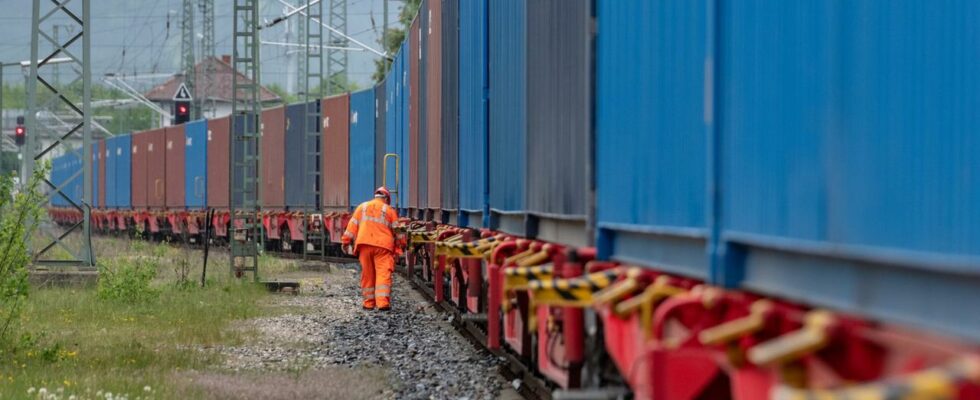background
The aim of the federal government is to get more freight transport onto the rails. But experts say that the opposite will happen if the track access charges are increased. Even more will then be transported by truck.
Before setting off from the container terminal in Duisburg-Ruhrort, Volker Mauska checks the brakes on his 600-meter-long train. Then the 800-kilometer journey for several truck trailers and more than two dozen containers to Linz in Austria begins. This means that these goods do not have to travel on the highway. 35 truck journeys are replaced by the train, which belongs to a subsidiary of the Austrian Federal Railways, Rail Cargo.
In the future, freight transport by rail will have a harder time competing with transport via the motorways. From December onwards, the track access charges that have to be paid for each train will increase. Deutsche Bahn actually wanted to increase the prices for all trains – whether local, long-distance or freight – by around six percent.
However, because politicians did not want to place any further burden on local transport, the increase was implemented to varying degrees. The price increase for local transport was very moderate at 0.6 percent; to compensate, the price for long-distance trains rose by 17.7 percent and for freight trains by 16.4 percent. This is the largest price increase since DB AG was founded in 1994.
“Toxic mix” for freight transport
Clemens Först, spokesman for the Rail Cargo Group, warns of a “toxic mix”. In addition to the dilapidated infrastructure and the many construction sites, there is now also a massive increase in costs. “This means a shift in freight transport to the road,” says Först.
Even before this price increase, costs had risen because the track access price subsidy was cut from 350 million to 180 million euros at the end of last year. Together with the planned increase in track access prices, costs will almost double.
For Peter Westenberger from Netzwerk Bahn eV, the consequences are foreseeable: “In the future, trucks will take on more of the traffic load.” The transport sector is already missing its climate targets. Transport by train is much more climate-friendly than by truck: instead of 111 grams per tonne and kilometer for trucks, only 17 grams are released by freight trains.
Deutsche Bahn sees “painful” cuts
The Federal Ministry of Transport describes the cuts in rail transport as plus minus-Request as “painful” and cites the “savings requirements of the package of measures for the 2024 budget as a result of the Federal Constitutional Court’s ruling of November 2023” as the reason.
At the same time, the ministry refers to the so-called “operating cost subsidy for single wagon transport”. Last week, the EU agreed that 1.7 billion euros could be spent within five years to bring more single wagons to often still disused railway sidings. But this type of transport only accounts for around 15 percent of all transport on the rails.
The freight train from Duisburg has now arrived in Austria. There, the state is massively promoting rail transport. When asked, the responsible ministry in Vienna explained the use of taxpayers’ money as follows: “In this way, we are not only protecting the climate, we are also easing the burden on the roads and ensuring fewer accidents and traffic jams.” In Germany, it will be more difficult to achieve such goals in the future given the rising costs.

